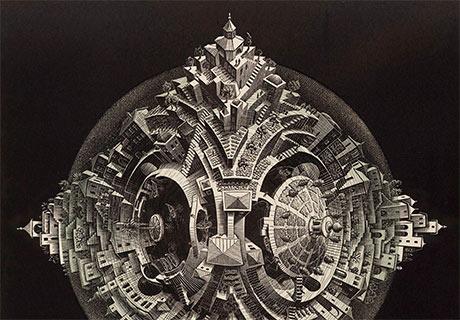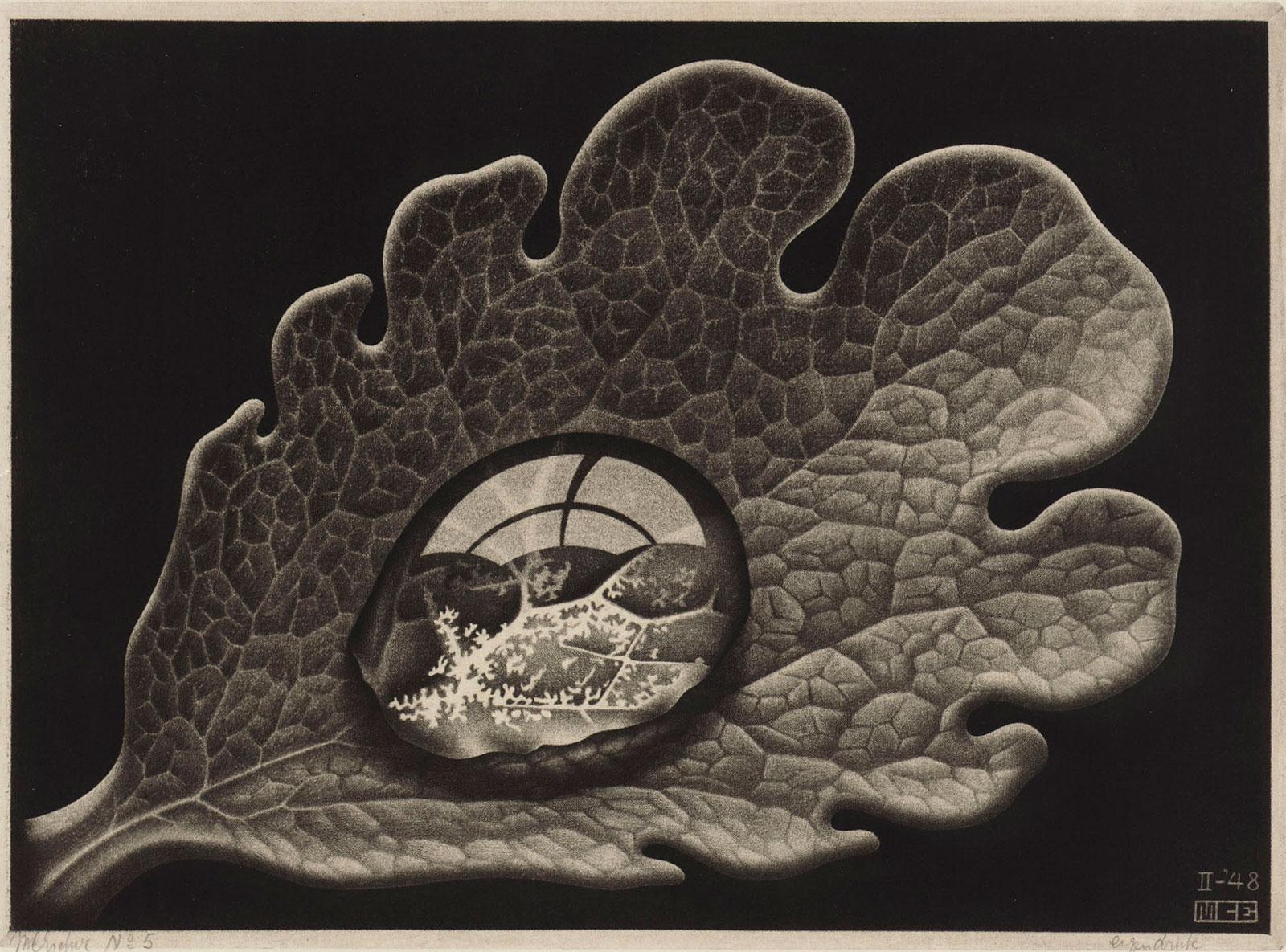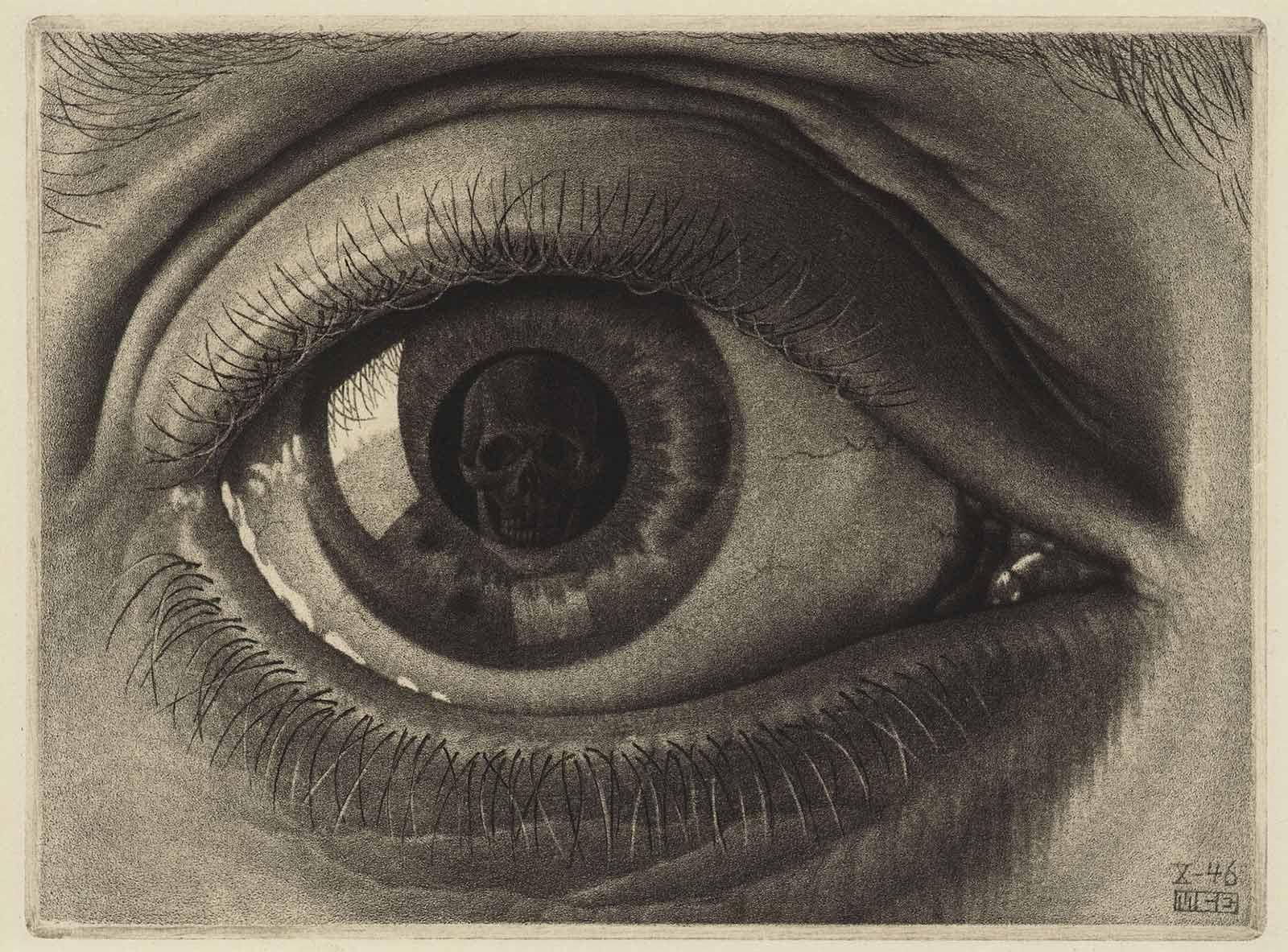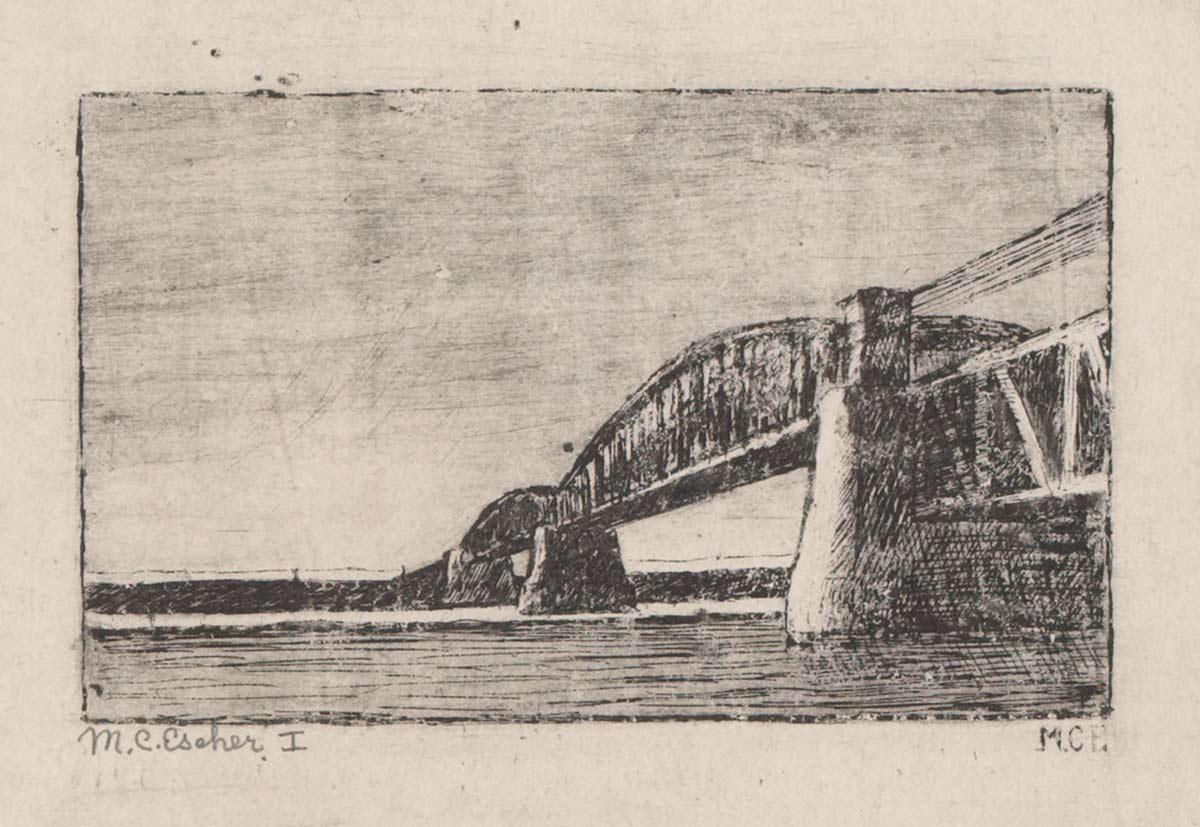The mezzotint technique is sometimes called the ‘black art’, as the black is so dark and velvety, and it can be used to work from dark to light. The blacks and greys in mezzotint create a rich, almost photographic image. The drawback of the technique, however, is that the copper plate is relatively soft, and every time it is passed through the press, the burrs are worn away, making each print progressively lighter. None of Escher’s mezzotints was printed in an edition of more than 50. Since the technique for making and printing the plate is so difficult and time-consuming, and because only a few good prints can be made with each plate, Escher made only a small number of mezzotints: eight, to be precise.
History
The mezzotint procedure was invented by a German professional soldier called Ludwig von Siegen (1609-1680). His earliest mezzotint print, a portrait of Countess Amelia Elizabeth of Hesse-Kassel, dates from 1642. The portrait was made using the ‘light to dark’ method.











